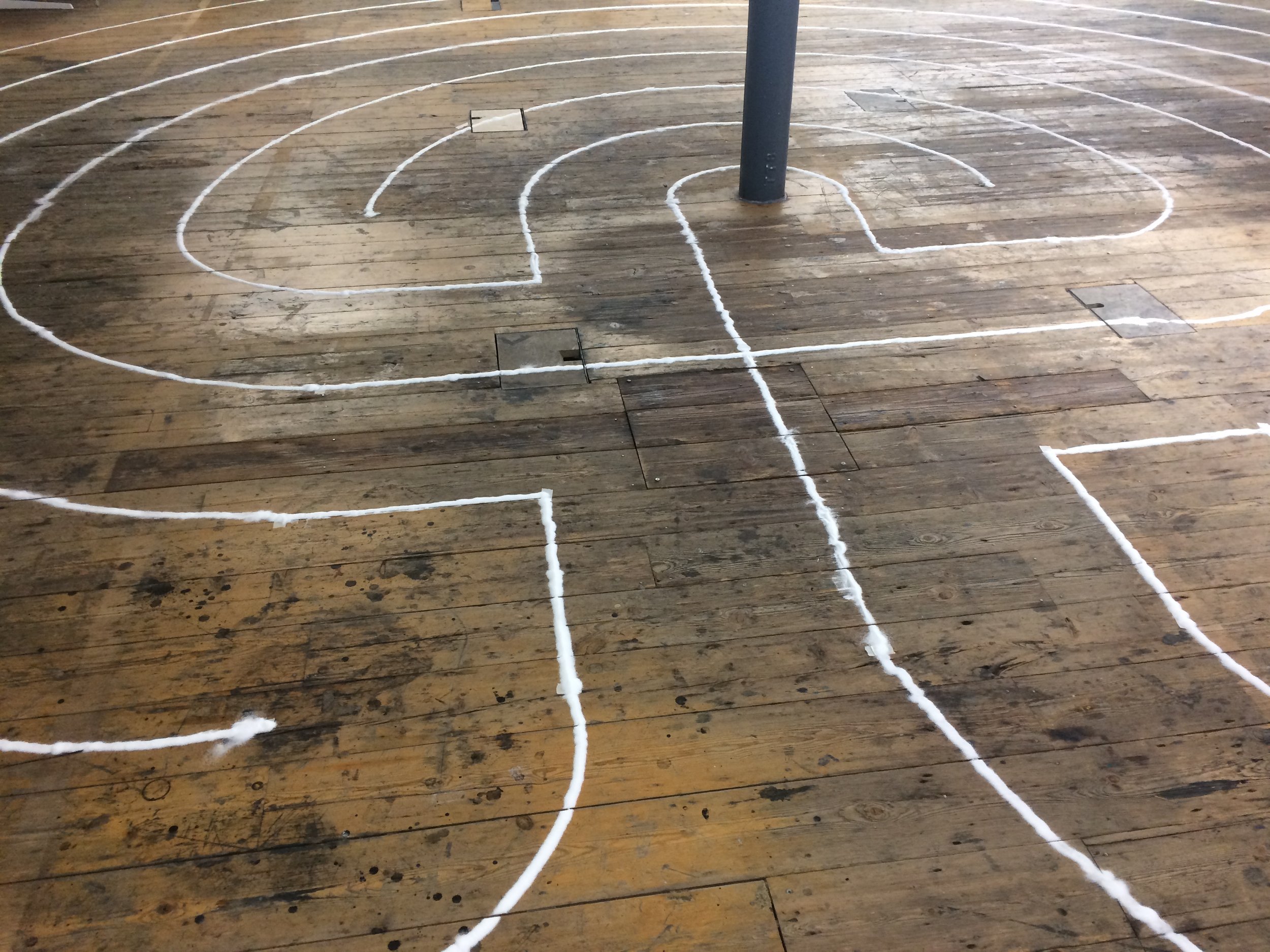There are medieval labyrinths that can be seen in the gothic cathedrals of Chartres, Reims and Amiens in France. In the Christian tradition they can represent several things, such as a journey of decent, into a deeper place for prayer and contemplation. Parallels can be drawn with Christ’s, “Decent onto Hell” (also known as the “Harrowing of Hell”). The decent into the underworld brings about a powerful transformation and represents a spiritual death and rebirth. When this occurs, genuine growth and transformation occurs.
I notice how the beginning of this transformation lies the cross. A cruciform shape extended outwards.
In the Christian tradition, the labyrinth can also represent an underground cave or womb of the Blessed Virgin Mary. The womb in which we are spiritually reborn. The circles can be compared to the turning of a child in the womb during pregnancy.
The Biblical figure of Nicodemus is also associated with the same themes of death and rebirth, as scripture tells us. In art, Nicodemus is often depicted upon a ladder, assisting in the removal of the dead body of Christ from the cross.
During the 16th century labyrinths began to be made with dead ends, or multiple endings, these became mazes. You become lost. This represents a change in world view that was occurring at that time. Labyrinths have only one path to follow, they are complete, whole and contained. Therefore the change must be internal.
The centre of the labyrinth is considered to represent the Holy City or the Spiritual Jerusalem.
This labyrinth was made with salt for ease of use. However this was also symbolic as salt is Biblically associated with sin.








